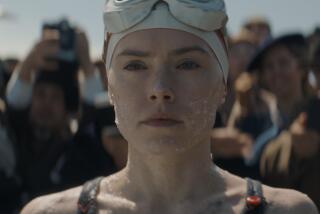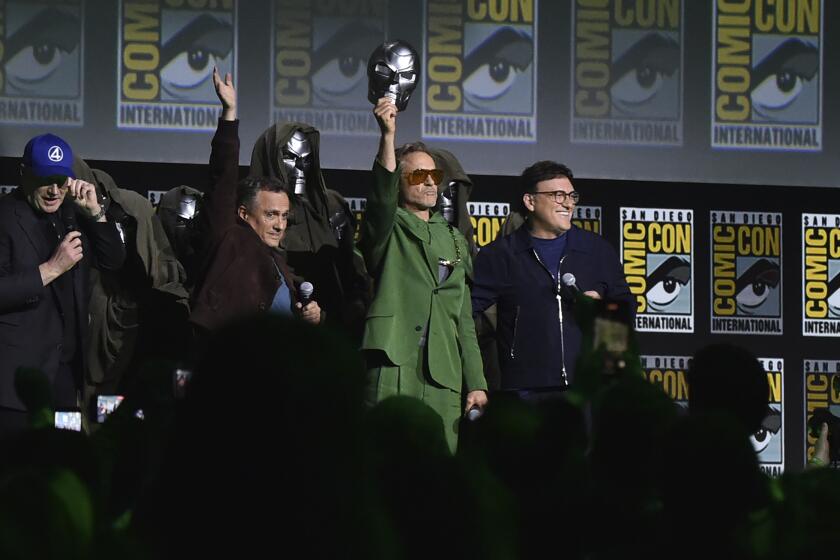Safe harbor
- Share via
Here are some simple undersea shots. Or are they?
For all the wriggling, color-saturated variety found in the undersea world, not many marine images come with the unseen complications that these do.
The photographer is Leni Riefenstahl, Adolf Hitler’s foremost filmmaker, who died in Germany, 101 years old, on Sept. 8.
Riefenstahl’s best-known works are her collaborations with the Nazis, included the ‘30s cinema spectacles “Triumph of the Will” and “Olympia,” which are often hailed as landmarks in cinematic technique and the art of propaganda, celebrating the human form and hinting at “master race” possibilities.
In the war’s aftermath, she spent several years in detention or house arrest under Allied forces, unemployable as a director, defiant over her Nazi associations, and eventually took up photography.
Then, in her early 70s, she turned to underwater photography. After lying about her age to qualify as a scuba diver, she spent more than 20 years traveling the world, diving, shooting and producing two books of undersea images.
Her public appearances and gallery shows often drew protests, but in the gathering of images she was insulated from all that, suspended among flamingo tongue snails in the Caribbean, starfish and brilliant yellow reed coral in the Maldives, or sea cucumbers in the Indian Ocean.
Was there redemptive power in celebrating a natural world free of human taint? Maybe, maybe not. Riefenstahl never acknowledged regrets for her Nazi collaborations.
As for the images, they are “very nicely done, very cleanly composed,” says Arthur Ollman, director of the Museum of Photographic Arts in San Diego. But one irony here, Ollman says, is that Riefenstahl’s undersea images lack the sort of innovation and power that drew such attention to her work for the Third Reich.
“There have been a number of fascist and fascist-leaning artists who have produced interesting works,” Ollman says. “The fact that this work was done by a woman who has such a controversial and ambiguous past adds a certain amount of biographical interest. But judging from the work itself, it doesn’t go beyond what others have done. The goal of an artist is to take us someplace we haven’t been before, and not just geographically. And what I see here is not that.”
More to Read
Only good movies
Get the Indie Focus newsletter, Mark Olsen's weekly guide to the world of cinema.
You may occasionally receive promotional content from the Los Angeles Times.











